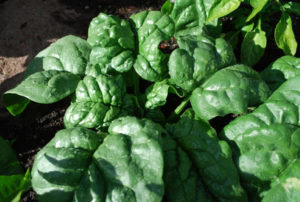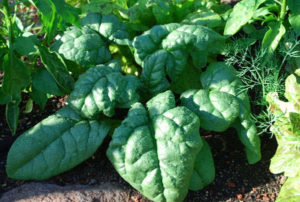
Spinach | Nutrition Summary , Beneficial Properties
About Spinach
Scientifically known as Spinacia oleracea; It belongs to the genus of Spinacia and the family of Amaranthaceae. It holds its origin in central and south western Asia but it is also believed to have first seen in Persia. It was later introduced to India by an anonymous source and later from India this leafy plant got introduced to China where it was also called Persian plant. During the 14th century spinach got introduced to England by Spain where it gained a lot of popularity. During World War I soldiers were given wine with spinach juice in order to treat their hemorrhage. A beloved cartoon character of the 90’s Popeye was as a show that promoted the goodness of spinach; its consumption made him strong instantly and he dared to fight the villain to rescue olive who was his lady love. This created a lot of awareness amongst young minds and also created an urge to accept and eat spinach as a part of their daily diet.
Nutrition Value
- This leaves are an Excellent Source Of Vitamin K.
- 100 g of fresh greens provides 402% of daily vitamin-K requirements.
- Fresh 100 g of spinach’s contains about 25% of daily intake of iron.
Health Benefits
- Diabetes management.
- Cancer prevention.
- Asthma prevention.
- Lowering blood pressure.
- Bone health.
- Promotes regularity Healthy skin and hair
Interesting Facts
The Spinach growing town of Crystal City, Texas, erected a Statue of Popeye in 1937.
Spinach Keep Brain Young
Spinach may slow the age-related decline in brain function. So, eat your greens and keep working those crossword puzzles to keep your brain young and agile.
| Principle | Nutrition Facts | Percentage Of RDA |
| Energy | 23 Kcal | 1% |
| Carbohydrates | 3.63 g | 3% |
| Protein | 2.86 g | 5% |
| Total Fat | 0.39 g | 1.5% |
| Cholesterol | 0 mg | 0% |
| Dietary Fiber | 2.2 g | 6% |
| Vitamins | ||
| Folates | 194 µg | 48.5% |
| Niacin | 0.724 mg | 4.5% |
| Pantothenic acid | 0.065 mg | 1% |
| Pyridoxine | 0.195 mg | 15% |
| Riboflavin | 0.189 mg | 14.5% |
| Thiamin | 0.078 mg | 6.5% |
| Vitamin A | 9377 IU | 312% |
| Vitamin C | 28.1 mg | 47% |
| Vitamin E | 2.03 mg | 13.5% |
| Vitamin K | 482.9 µg | 402% |
| Electrolytes | ||
| Sodium | 79 mg | 5% |
| Potassium | 558 mg | 12% |
| Minerals | ||
| Calcium | 99 mg | 10% |
| Copper | 0.130 mg | 14% |
| Iron | 2.71 mg | 34% |
| Magnesium | 79 mg | 20% |
| Manganese | 0.897 mg | 39% |
| Zinc | 0.53 mg | 5% |
| Phyto-nutrients | ||
| Carotene-ß | 5626 µg | — |
| Crypto- xanthin-ß | 0 µg | — |
| Lutein- zeaxanthin | 12198 µg | — |
This family is well known for its high nutrition value; a cup of raw spinach’s consists of 23 calories and 2.9 grams ofprotein which constitutes to about 5% of protein nutrition. This leafy green is rich 187% vitamin A, 46% of Vitamin C and Vitamin K. Vitamin A is essential for good eyesight, aging adults should consider adding kale to their daily diets. Vitamin C that is rich in anti oxidants and it helps in smooth functioning of the body cells. On the contrary Kale is also known as the richest source of vitamin c as kale consists 3 times more proteins than spinach and more vitamin c than an orange. It is a cruciferous plant and like its relative plants it is vested with anti cancer properties and anti oxidant properties that prevents the body from falling prey to life endangering diseases such as breast cancer, prostate cancer and colon cancer. High levels of stress and stress related problems can be kept under control by adding spinach as a part of one’s daily intake. Apart from hosting these vital nutrients it also has the benefit of various other nutrients such as iron, manganese, magnesium, lutein and zeaxanthin are a few to mention.
Abundant flavonoids in spinach act as antioxidants to keep cholesterol from oxidizing and protect your body from free radicals, particularly in the colon. The folate in spinach is good for your healthy cardiovascular system, and magnesium helps lower high blood pressure. Studies also have shown that spinach helps maintain your vigorous brain function, memory and mental clarity. Studies have shown that consumption of green leafy vegetables such as spinach may slow the age-related decline in brain function. So, eat your greens and keep working those crossword puzzles to and agile.
The first thing to know is that spinach is divided into three main varieties.
1)savoy
Savoy Spinach is very productive and handles cold better than most types of spinach. It has deeply crinkled leaves and a low growth habit that makes cleaning leaves a chore, especially in silty soils where grit splashes onto the leaves.
2)semi-savoy
Semi-Savoy Spinach varieties have a more upright habit that makes mud splash less likely, and the leaves aren’t as crinkly, so they’re easier to wash. They also tend to have better disease- and- bolt-resistance, so they’re usually the best choice when growing spinach at home.
3)flat-leafed. (Smooth-Leafed Spinach)
Smooth-Leafed Spinach It is just as the name suggests; with a very smooth surface that is the easiest to clean. They are also the first spinach used as the canned and frozen variety. But they are sold fresh as well.
Each of these varieties has their cultivars or sub-varieties. The truest form of spinach is scientifically called Spinacea oleracia.
TYPES OF SPINACH
1)savoy spinach (Smooth-Leafed Spinach)
⦁ Bloomsdale
‘Bloomsdale’ is a classic, thick-leafed, succulent savoy spinach that handles cold better than most varieties. It produces large yields in early summer, but has limited bolt resistance.
⦁ Regiment
This plant produces large yields of deep, saturated green leaves that stay soft and tender even when they have matured. This makes the plant easy to cook and use in the kitchen.
2)Semi-savoy spinach (Smooth-Leafed Spinach)
⦁ Indian Summer
‘Indian Summer’ (F1 Hybrid, 40-45 days, is a fine, productive, 3-season) spinach for spring, summer, and fall production. Flattened, semi-savoy leaves are almost like smoothleaf spinach. Very slow to bolt.
⦁ Tyee
‘Tyee’ (F1 Hybrid, 45 days, resistant to Downey Mildew races 1 and 3) is a semi-savoy variety.This variety of spinach grows upright and develops vigorously. It has dark-green leaves that are bolt-resistant. It can be grown in mild-winter areas throughout the year.
⦁ Catalina
‘Catalina’ (F1 Hybrid 48 days) this plant has thick leaves that are succulent and spear-shaped. It is a good variety to be used for cooking because of the structure of its foliage. ⦁ Teton
⦁ Teton
‘Teton’ (F1 Hybrid, 40-45 days, resistant to races 1-4 of Downey Mildew) is a 3-season semi-savoy spinach with deep green oval leaves on upright plants. Very slow to bolt.
3)Smooth-leafed Spinach
⦁ Space Spinach
‘Space’ (F1 Hybrid, 45 days, resistant to races 1-3 of Downey Mildew) is slower to bolt than most smooth-leafed varieties. Space has dark green, round, spoon shaped., that are still meaty enough for real flavour.
 ⦁ Red Carnival
⦁ Red Carnival
‘Red Cardinal’ (25-30 days) has red veins in the leaves and deep red stems (like beet leaves). Harvested as baby greens, they make a beautiful addition to a salad, but they bolt faster than any green-leafed spinach and must be harvested young.
 Alternative Spinach
Alternative Spinach
1. New Zealand Spinach
The leaves of this plant are crisp and succulent. They pretty much melt in your mouth as you bite into them! So it can be eaten raw but also cooked.

2. Malabar Spinach
This spinach needs a lot of summer heat and a trellis to climb on, which will help it reach its full potential. This could be a 10’ vine! Grow it if you want some height in your garden.

Nutrition facts
The nutrition facts for 3.5 ounces (100 grams) of raw spinach are (1Trusted Source)
| Principle | Nutrition Facts |
|---|---|
| Calories | 23 |
| Water | 91% |
| Protein | 2.9 grams |
| Carbs | 3.6 grams |
| Sugar | 0.4 grams |
| Fiber | 2.2 grams |
| Fat | 0.4 grams |
Vitamins and minerals
Spinach is an excellent source of many vitamins and minerals
Vitamin A: Spinach is high in carotenoids, which your body can turn into vitamin A.
Vitamin C: This vitamin is a powerful antioxidant that promotes skin health and immune function.
Vitamin K1 : This vitamin is essential for blood clotting. Notably, one spinach leaf contains over half of your daily needs.
Folic acid: Also known as folate or vitamin B9, this compound is vital for pregnant women and essential for normal cellular function and tissue growth.
Iron: Spinach is an excellent source of this essential mineral. Iron helps create hemoglobin, which brings oxygen to your body’s tissues.
Calcium: This mineral is essential for bone health and a crucial signaling molecule for your nervous system, heart, and muscles.
Spinach also contains several other vitamins and minerals, including potassium, magnesium, and vitamins B6, B9, and E.
How To Enjoy Spinach
The healthiest way of cooking spinach is by boiling it and then consuming it in order to remove all the bacteria and other compounds feeding on it. This can be added to make pesto sauce for pasta, can be added as a stuffing in ravioli, it can be used to make cold dips to eat with
bread sticks and vegetables, add spinach as a base to lasagne to give it an healthy twist. The classic dish made out of spinach’s is the spinach salads or may be spinach cooked in olive oil and pine nuts served as a side dish alongside risotto or a creamy soup to give a crunch to the rich texture.







